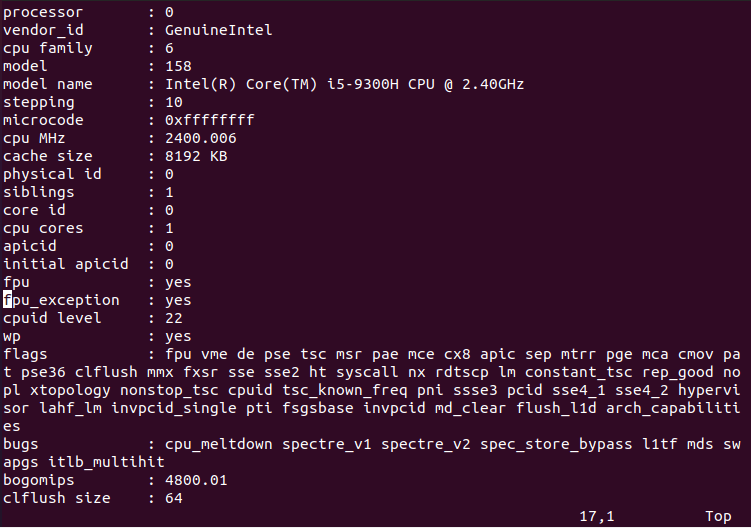
- #Proc cpuinfo virtualization manual#
- #Proc cpuinfo virtualization software#
- #Proc cpuinfo virtualization free#
If that is not the case, you can access the BIOS of your system and check for entries like Intel Virtualization Technology/Intel VT-x or SVM mode (AMD) - usually to be found in the CPU configuration in the Advanced section. roottesthost05 cat /sys/module/kvmintel/parameters/nested 1 On an AMD physical machine you can do pretty much the same thing. Kernel-based Virtual Machine (KVM) is a virtualization solution for Linux on x86 hardware containing Intel VT or. For AMD processors you can execute grep svm /proc/cpuinfo to check for AMDs Secure Virtual Machine. If you want to enable it, you need to add the following line to your *. To test if you have nested virtualization enabled you can check under /proc for both of these you need the value to be 1.
#Proc cpuinfo virtualization software#
You can still use QEMU/KVM, but the emulator will fall back to software virtualization, which is much slower. (vmxsvm)' /proc/cpuinfo If this command results in nothing printed, your system does not support the relevant virtualization extensions. Regarding to a comment on my docker post this issue affects others as well Same issue when running cadvisor images, arch detected as amd64 but no MHz/GHz info is in the cpuinfo Steps to reproduce You need: M1 Mac Docker Desktop 4.1.

#Proc cpuinfo virtualization free#
The flags in cpuinfo simply mean that your processor supports it.įrom my research, VT is required in order to run 64-bit guests under the free VMware server for linux… so it would logically follow that if you can do so, VT is enabled.ģ2-bit VT is not enabled by default under VMware server. If the output shows vmx flags, it means your CPU supports hardware virtualization. To check whether you have CPU support, run the following command: egrep 'flags. In this configuration the /proc/cpuinfo once again matches the host not the emulation. In short, it is an operating system that emulates a computer system. A virtual machine is a solution designed to provide all of the functionality of a physical computer in a software-based virtual environment.

VT technology can still be disabled in your computer’s BIOS, however, so you’ll want to check there to make sure that it hasn’t been disabled. In short, the virtualization concept can be simply considered as one computer within another. My system has two processors, so there are two separate sections:įlags : fpu vme de pse tsc msr pae mce cx8 apic sep mtrr pge mca cmov pat pse36 clflush dts acpi mmx fxsr sse sse2 ss ht tm syscall nx lm constant_tsc pni monitor ds_cpl vmx est tm2 ssse3 cx16 xtpr lahf_lm flags : fpu vme de pse tsc msr pae mce cx8 apic sep mtrr pge mca cmov pat pse36 clflush dts acpi mmx fxsr sse sse2 ss ht tm syscall nx lm constant_tsc pni monitor ds_cpl vmx est tm2 ssse3 cx16 xtpr lahf_lm KVM is a virtualization module in the Linux kernel that allows the kernel to function as a hypervisor.If your system supports VT, then you’ll see vmx or svm in the list of flags. The following output contains a vmx entry indicating an Intel processor with the Intel VT extensions.

#Proc cpuinfo virtualization manual#
KVM stands for Kernel-based Virtual Machineįor a detailed installation manual please follow the KVM section on our Documentation server.įor ready images for KVM check openSUSE Tumbleweed JeOS or openSUSE Leap JeOS


 0 kommentar(er)
0 kommentar(er)
